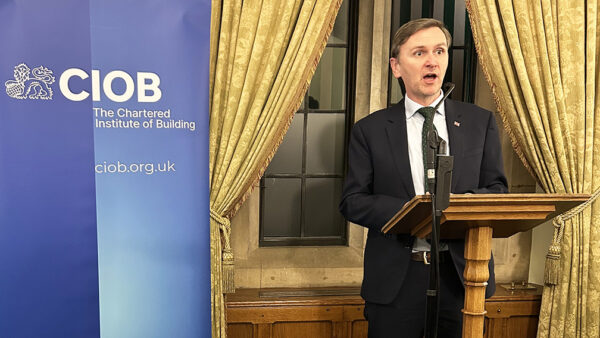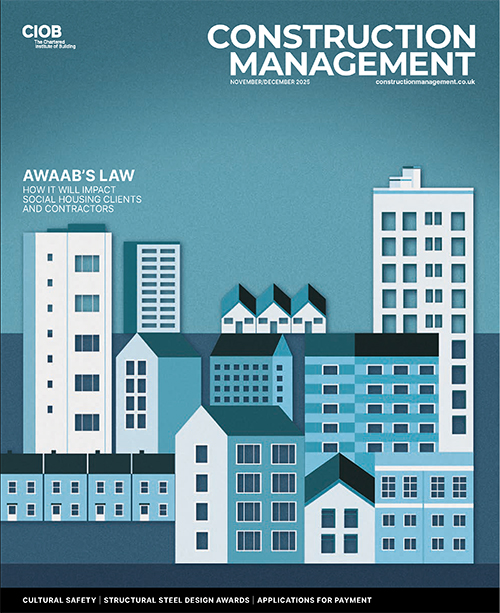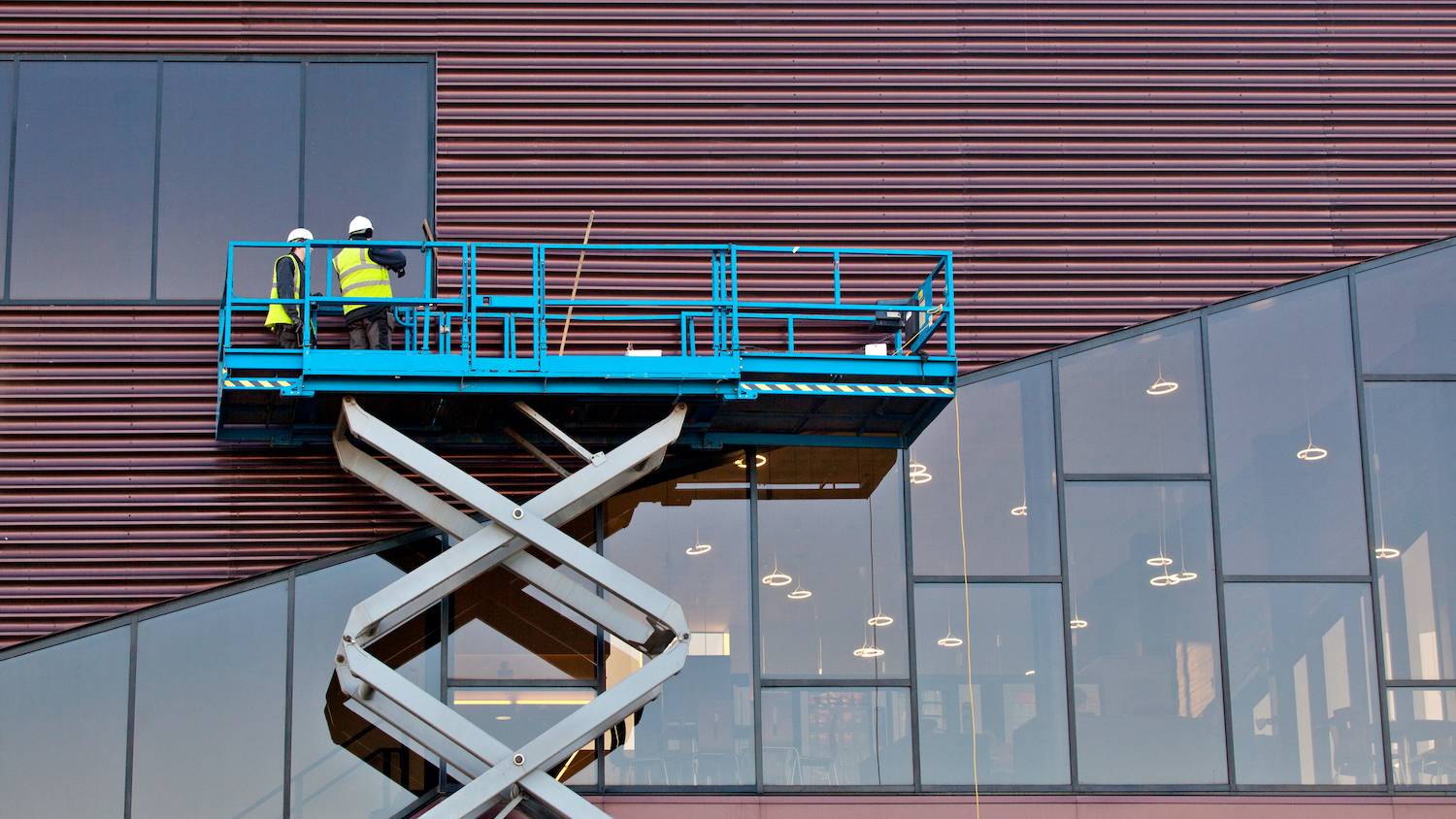Construction has made some progress on diversity, but when it comes to women in the boardroom, the industry still has work to do. Katie Puckett finds out how it can change. Overleaf, career coach Paul Sealy advises two women on how to progress their careers
Wanted: a woman senior civil engineer, with a strong commercial background and experience of working in Asia, currently serving on the board of a FTSE 100 company. This was the brief given to headhunters seeking the first female non-executive director for FTSE 250 company Balfour Beatty earlier this year. The contractor has found her, but had to look overseas and outside the industry — Canadian Maureen Kempston Darkes is a former group vice president of General Motors and a lawyer by training.
Balfour Beatty was acting in the spirit of the times: the under-representation of women in British boardrooms was put under the spotlight by last year’s Davies Report. He found that women made up just 12.5% of the boards of FTSE 100 companies, and at the current rate of change, it would take more than 70 years to achieve gender parity. Davies’ recommendation, backed by government, was that the largest businesses in the FTSE 100 should achieve a minimum of 25% of female board representation by 2015, and that all companies should set themselves “challenging targets”.
But as Balfour Beatty’s experience shows, there just aren’t that many senior women coming up through the ranks in construction. Those who have made it to the top almost always have an HR, finance or marketing background — the operational side of the business seems to be poor at giving women the skills and experience they need to get on. Meanwhile, both men and women from black and minority ethnic (BME) backgrounds are also under-represented at all levels.
So how can construction break a mould that consistently produces white male directors, create a more diverse talent pool and meet the targets set by the Davies Report?
In the past decade, many construction companies have raised the ratio of women and BME professionals in the junior ranks through graduate intake programmes. Now the challenge for businesses such as Vinci Construction UK is talent development — turning the emerging managers in their early 30s into the business leaders of the future.
Ultimately, Vinci’s aspiration is to increase diversity on its 14-strong management board that manages day-to-day operations, and then Vinci UK’s main board, says HR director Colin Jellicoe.
“The onus is on us to create opportunities for a diverse group of people and give them access to the right experience as often as we can, so that we end up with a more diverse profile of candidates,” says Jellicoe. “Women in the boardroom is certainly an aspiration for us, although ultimately it’s about promoting the best quality people. If we create the right opportunities for people to move up the organisation, they will get there with the right skills and experience, and not just be there as a token gesture.”

Derailing point
But any talent development programme will have to address “leaky pipe syndrome” — the fact that many women recruited into construction management leave before their careers take off. The most common derailing point is when they start a family and struggle to reconcile their new responsibilities with the demands of their job. Research consistently shows this is the reason why up to a third of women leave the industry, particularly those in site-based roles. “The majority would like to return to industry, but they can’t find a way,” says Chrissi McCarthy of training consultancy Constructing Equality, who is currently studying for a PhD on the business case for diversity in construction, sponsored by Vinci Construction.
“We would lose women who had a lot of potential in construction management because they couldn’t reconcile the nature of site work with family commitments,” agrees Paul Sealy, former head of organisational development at Kier Group who now runs HR development consultancy OWL Performance. “There needs to be a groundswell of people coming through saying that this is a real problem. Then companies would say: we can’t lose these talented people, we need to do something.”
While many women returners will encounter tensions, research shows that those who have supportive managers are less likely to leave. This is a key focus for construction and project manager Mace, which has set up a task force to address gender equality issues. Group human resources director Kath Knight says that career breaks, enhanced maternity benefits and more flexible working arrangements are all part of the solution, but she also believes more formal mentoring will help if women are to feel empowered to ask for these things in the first place.
“Sometimes it’s quite a challenge for people to go to their manager to talk about wanting to work more flexibly,” says Knight. “We’re trying to make it easier for them to say, ‘I’m really committed to what I do but it would really help me if I could do it in a different way’. It’s about supporting individuals to ask for what they need and supporting managers so that they know it’s okay.”
As long as people are doing their jobs well and clients are happy, it doesn’t matter whether they’re in the office or at home, she points out. “It’s easier in some parts of the business than others, and it is a challenge on construction sites — but one of our most senior women is a part-time planner,” she adds.
Mace’s mentoring scheme is open to both men and women, but Knight believes “women need a little bit more of a push to aspire to the higher levels. We want to encourage more women to think it’s the thing for them.”
Gender-specific training
FTSE 250 company Atkins — named in The Times Top 50 Employers for Women 2011 — has two female non-executive directors on its board, and has set a target of reaching 33.3% by 2015. Atkins has also embarked on gender-specific training to develop women’s ambition. “We couldn’t train all 9,000 of our employees, but we can train some of our women to help them feel more comfortable that they’re progressing and being supported in a predominantly male organisation,” says Sue Cooper, UK HR director.
Last year, 50 women completed a career development course, and a further 50 will take the training this year. “Some women described it as life changing,” continues Cooper. “All the evidence shows that women are much less inclined to plan their careers than men and men are better at showcasing their skills. Once it was pointed out to women, they did think about it more, but they tended to want to set near-term goals rather than longer-term ones.”
Cooper has also established a women’s professional network within Atkins, which will hold quarterly events. “Each will be supported by a managing director in a particular location, so that it can be seen very positively that it’s got the support of senior managing directors, most of whom are male.”
Sealy thinks this kind of director-level backing is crucial to success, and something that women in particular often lack. “Anyone who’s going to make it to a senior board level position absolutely needs senior sponsorship — not just mentoring but someone who’s going to actively help them run their career and make sure they’re in the right place.”
Visible support from the top is also identified by Shepherd Construction as a key issue. Like Vinci UK, Shepherd is working towards the Investors in Diversity award, as head of HR Paula Smith explains. “[Diversity] is now being led by the executive leaders of the business, it’s on the board agenda, there is a real commitment to developing a diverse workforce and the benefits this can bring. You can have all the right policies, but if the leaders don’t create the right environment and culture it won’t work.”
Smith has also been looking more closely at how jobs are advertised to encourage more female applicants. Atkins’ Cooper has also been thinking about this, particularly with regard to senior positions: “Changing the language to focus on flexible skills and a more collaborative approach can make these roles more attractive to women,” she says.
Firms can also make sure they’re not unconsciously ruling anyone out. “We’re evaluating our selection criteria and, in particular, core behaviours, for talent, to try to ensure that we do not indirectly exclude groups at the point of selection,” says Charlie Weatherhogg, director of HR at Aecom. “At a basic level, organisations can help broaden their managers’ vision and raise awareness of any bias that they may have.”
Weatherhogg also believes a public demonstration of the company’s commitment to diversity is important. Aecom has signed the UKRC CEO Charter, which aims to increase female participation in science and engineering, and joined an organisation called Opportunity Now, which focuses on both race and gender diversity.
The companies quoted may be taking a lead on diversity, but for many businesses operating in today’s climate it’s just not a priority. Chrissi McCarthy acknowledges that the pressures faced by construction companies — tight programmes, cut-throat pricing and demanding clients for example — don’t leave much time or energy for addressing internal issues. “The industry just isn’t as good a place to work as it could be. Construction gives everyone a hard time at the moment — men, women, ethnic minorities.”
But as well as the Davies Report, there are plenty of reasons to work towards a more diverse workforce led by a mix of faces. Many studies show companies that draw on a broader range of experiences, skills and views are more successful and resilient. On a practical level, public sector clients are increasingly committing to promoting diversity under the Equality Act 2010, and expecting suppliers to do likewise. If construction doesn’t start to match the diversity levels of other industries, it will find it increasingly hard to recruit the talent it needs — and reflect the clients it works for.
What the coach says…
Can an experienced career coach help two CIOB members identify their goals and take a step towards them? We invited Emma Nicholson FCIOB, a sustainability manager at Rider Levett Bucknall, and Zoe French MCIOB, a construction manager at Overbury to a coaching session with Paul Sealy of OWL Performance
Paul on Zoe
Zoë is a graduate with three or four years’ experience. She was really impressive — to have achieved MCIOB 18 months into her career and had a considerable level of responsibility in construction management fit-out is very impressive. Obviously Overbury has recognised that and given her a good role in terms of her professional development — she’s currently in client liaison as a Business Continuity Manager.
We discussed influencing techniques to help her in that role: people often build a case by working out the logical reasons why someone would want to do something, then present their case as forcefully as they can. But an alternative is to ask the other person a lot of questions, and use their answers to gradually steer to the outcome.
She has clear strengths — her enthusiasm, her hard work ethic and her eye for detail. If you’re working in fit-out, that’s hugely important because the client wants a great finish, and that level of perfectionism has helped make her so successful. But a relationship management role doesn’t necessarily play to her eye for detail, although I’m sure she’s got all her processes perfect!
Zoë’s ambitious, but needs to work out what it is she wants to achieve. She’s got a year left in her current job, which is a great learning experience but doesn’t play to her enthusiasm and drive to get the job done. Those are project management and operational skills, and she may well want to progress in that direction. If so, her next role should maybe offer her more exposure to bids, tenders and the commercial side of the job.
So she should prepare to instigate a conversation about that in the coming months. She seems like a very positive person, which is good as you need to be proactive in terms of career development.

Zoe’s response
I took the opportunity to speak to Paul as I thought it might help to speak to someone with a different perspective on the industry, and to see how he applied that knowledge to my career. My goals at the moment are just to be the best employee I can be. If Paul described me as hard-working, enthusiastic and with an eye for detail, that’s very flattering, they’re qualities I’ve always worked towards.
Paul took a very positive approach to my career development, emphasizing that I should play to my strengths and work to enhance them. So it’s nice to hear that from someone with his experience — that you should work on your positive strengths, and use them to make people remember you.
My current role is one I’m learning a lot from. Overbury is very good at developing individuals. Paul suggested that I sit down with my line manager and discuss my next move with them, and to commit to a particular role. But while I’m still learning, I want to be guided by my mentors in Overbury and elsewhere. So I don’t want to set my stall on anything in particular just now.
Eventually I’d like to think I can enhance the skills I’ve got to become a good project manager, but that’s something to discuss with my managers. The role I’m doing now is so involved and so interesting I’m not thinking beyond getting this job right.
Paul talked about mentoring, the importance of having as many people to speak to as possible, and said that building positive relationships is key to being successful in this industry. That’s certainly something that’s always been important to me.
Paul on Emma
Emma is currently seconded from Rider Levett Bucknall to LOCOG (the London Organising Committee of the Olympic and Paralympic Games), as an Environmental Compliance Manager. Her role at LOCOG is establishing her on her chosen career path, and she’s working as part of a Sustainability Team. She has a very clear idea that she wants to develop her career within sustainability, although she initially started out in project management.
She’s extremely well networked, which will stand her in good stead. She has responsibilities on several industry groups: she’s Chair of the CIOB Sustainability Strategy Group (SSG), a founder member of the Women in Sustainable Construction and Property group, and a member of the Low Carbon 2050 Group (originally 2050 Group of the Innovation Growth Team established for Industry Government Leadership). It’s rare to find someone in construction who’s so well networked.
But what Emma needs now is a couple of mentors. She’s aware of this, and has been trying to find a senior person in the sustainability part of the industry. She could also do with a board-level mentor to broaden her awareness of commercial decision-making. Successful people will take opportunities to be mentored by more than one mentor so she needs to build those connections.
Working on your leadership style is also very important for moving your career forward. If, like Emma, you don’t have formal access to in-house feedback through your employer as a freelance contractor, one option is to commission a consultant to capture feedback or carry out a 360 process at the end of a project — you can set criteria and competencies you want to look at, and nominate respondents.
People in construction will often consider their professional development, but it’s important not to neglect personal development.
Emma has a highly impressive profile and a clear idea of what she wants to do. If she think’s she’s going to be on a board in the future, I would tend to agree with her.

Emma’s response
It was a really beneficial conversation with Paul, and he gave me some sound advice and interesting feedback. He said I was on the right track in terms of developing my skills, and said I was moving in the right circles due to my networking and outside interests in sustainability.
Paul advised that my earlier project management experience was not past its sell by date, and I’d clearly gained a strong broad level knowledge of the construction industry before deciding to specialise in sustainability consultancy work.
I already have experience of being a mentor, but Paul recommended I approach a mentor operating in sustainability. I’ve actually recently approached a mentoring group to find a suitable mentor operating at a higher level in sustainability and am waiting to find the right match. Paul also recommended that I should have a board-level mentor, which I am now working on.
I’ve done committee work for the CIOB since 2003. I’ve sat on the London Branch Committee, the Conservation, Maintenance and Refurbishment Group, CIOB Novus, the London Branch Sustainability Strategy Group, and the CIOB Carbon Action 2050 Group. Last year I set up Women in Sustainable Construction and Property (WSCP), which has more than 100 members on LinkedIn.
So I’ve developed a wide industry knowledge, decision making, networking and leadership skills, which Paul thought was good.
I hadn’t planned to gain advice from a career coach, but an outside perspective has given me useful insights.










